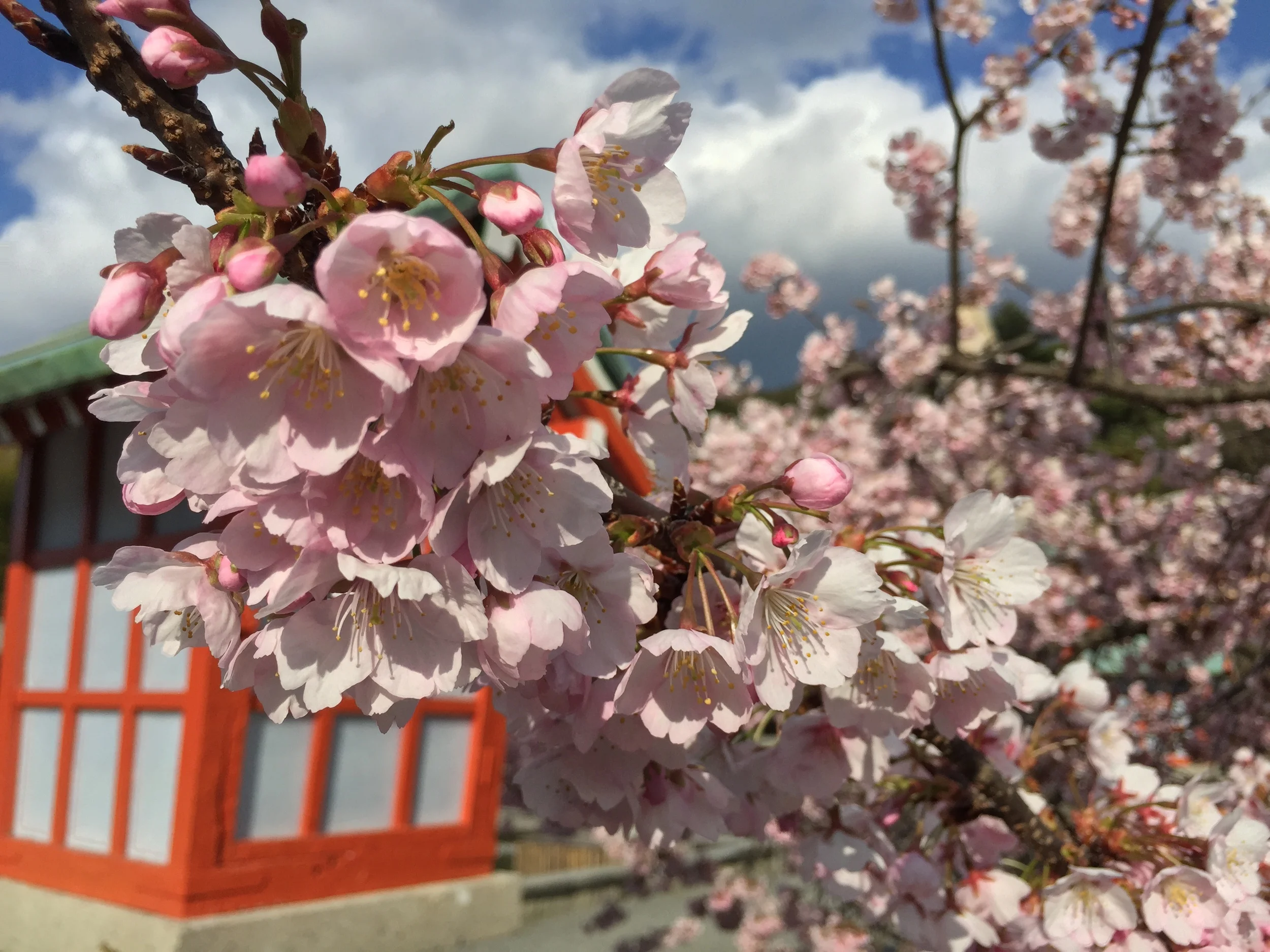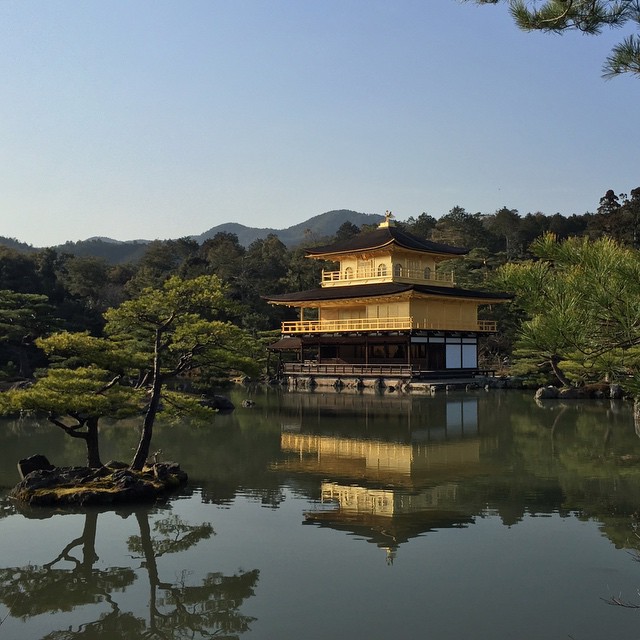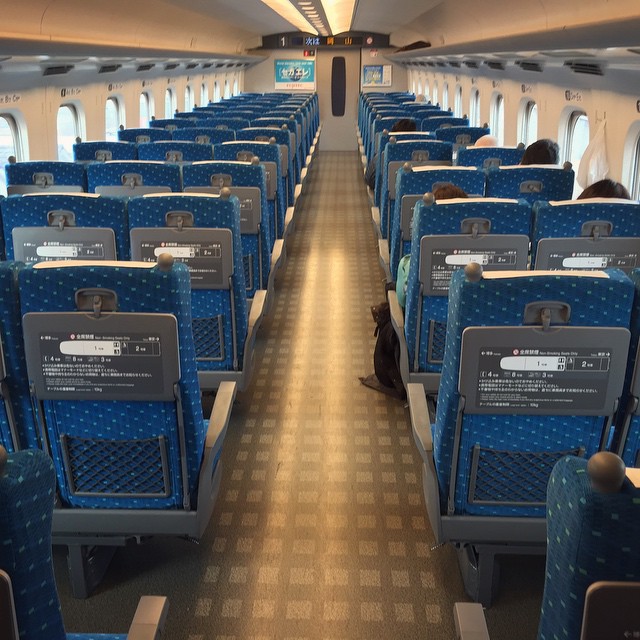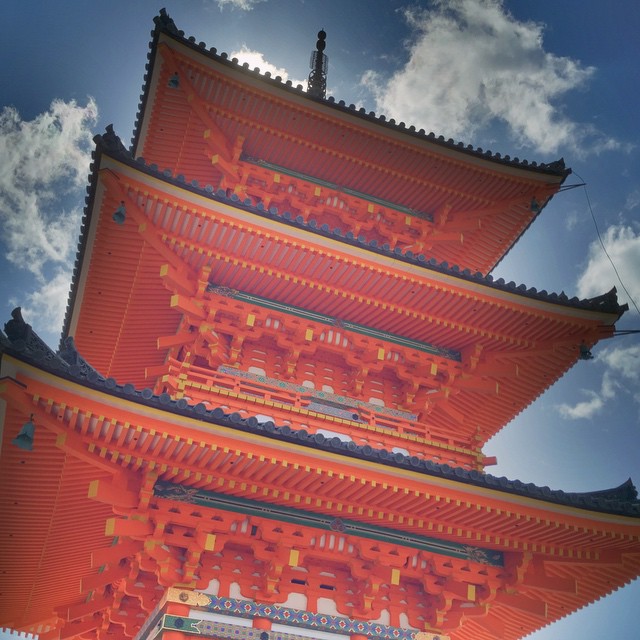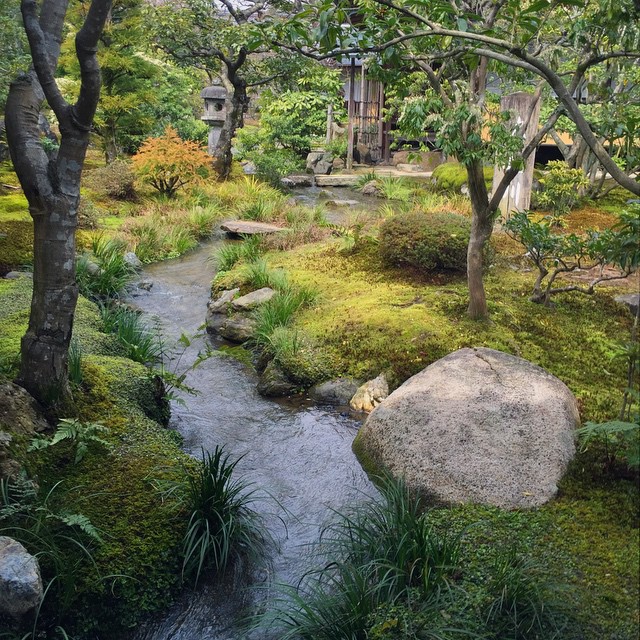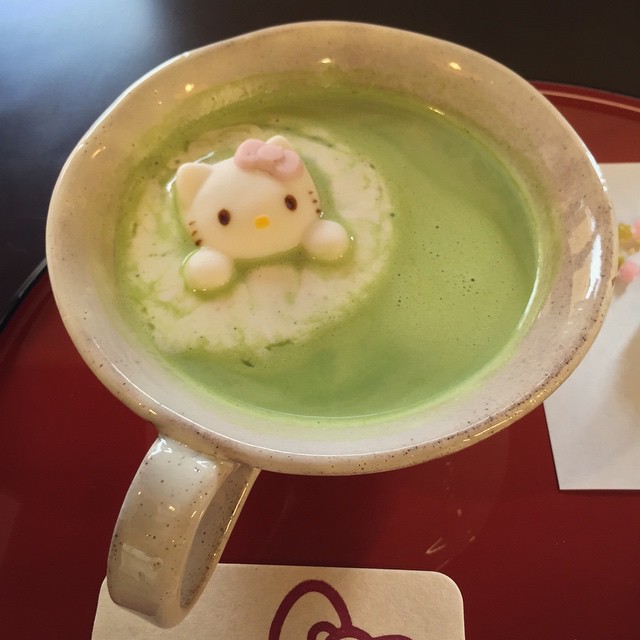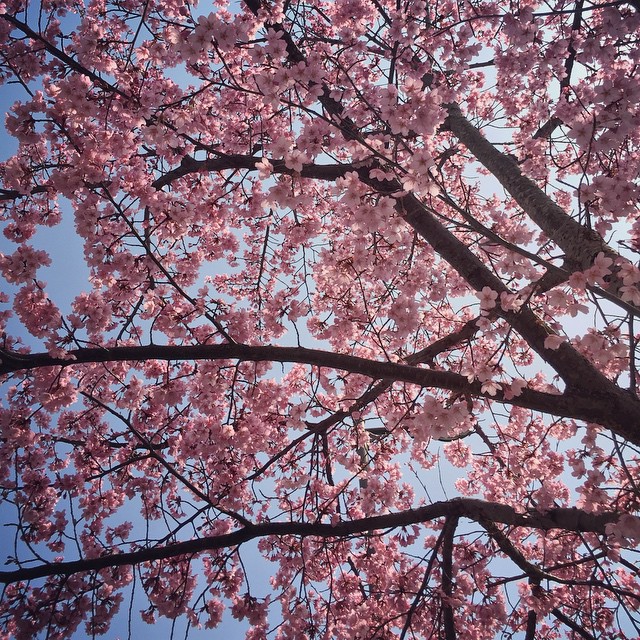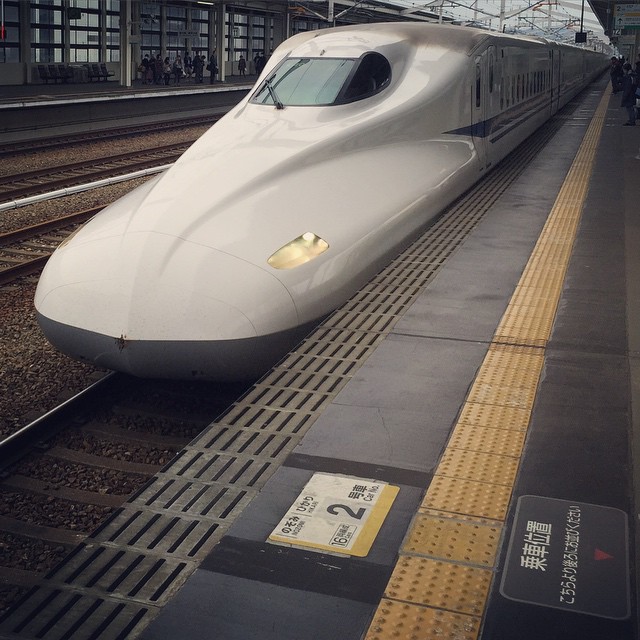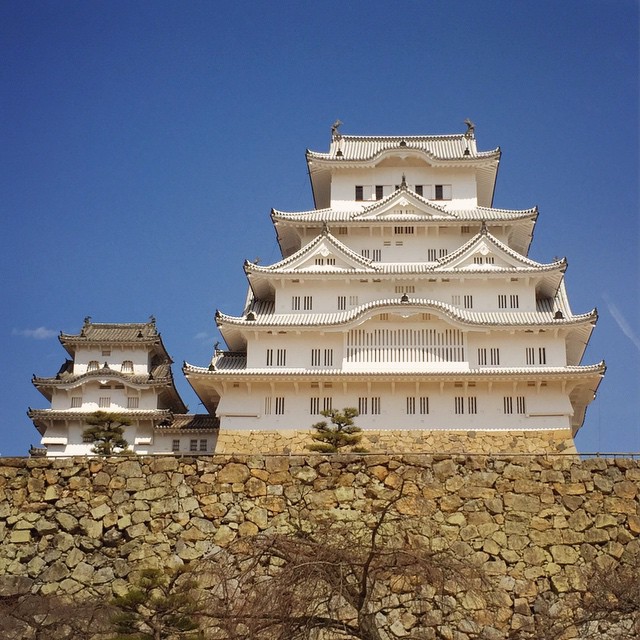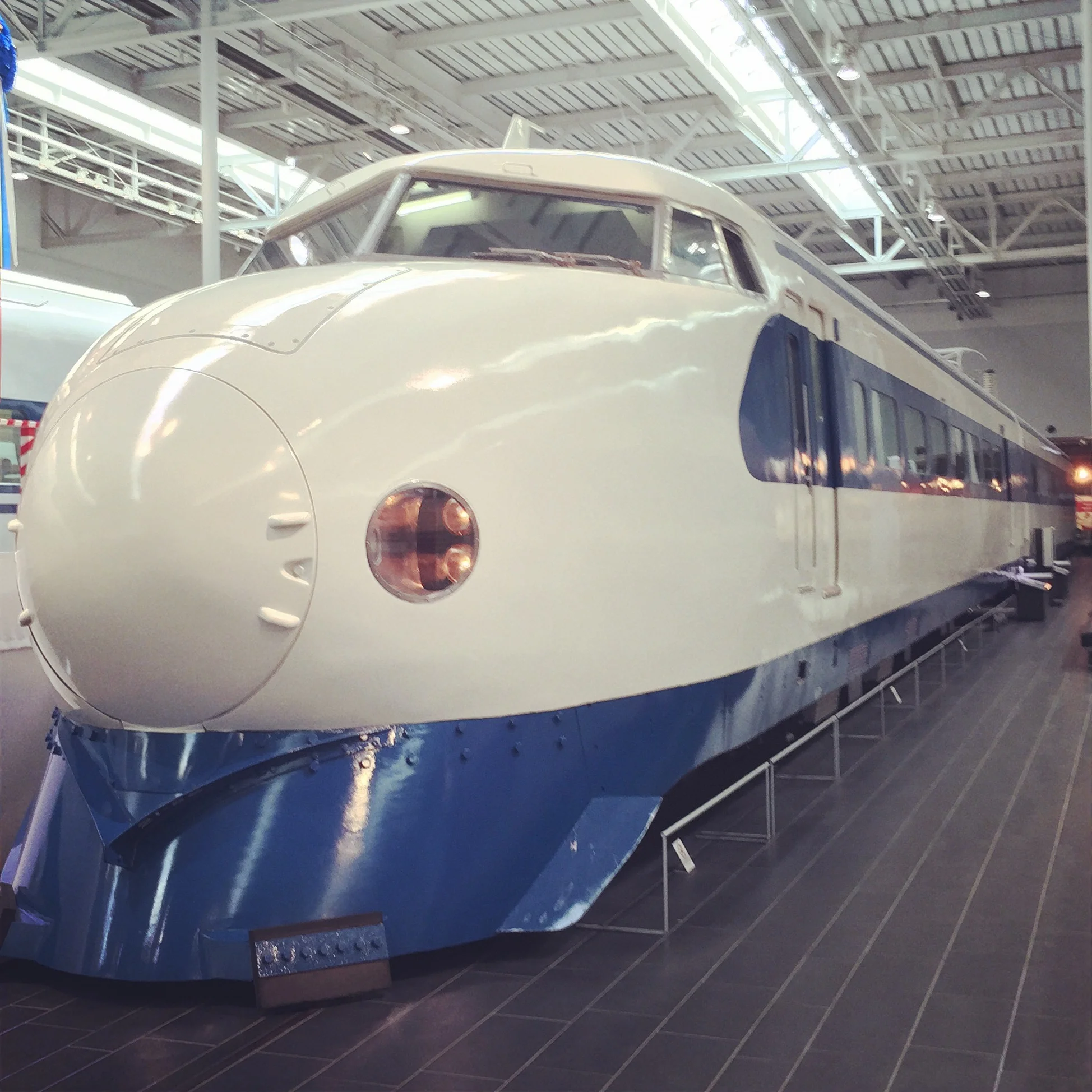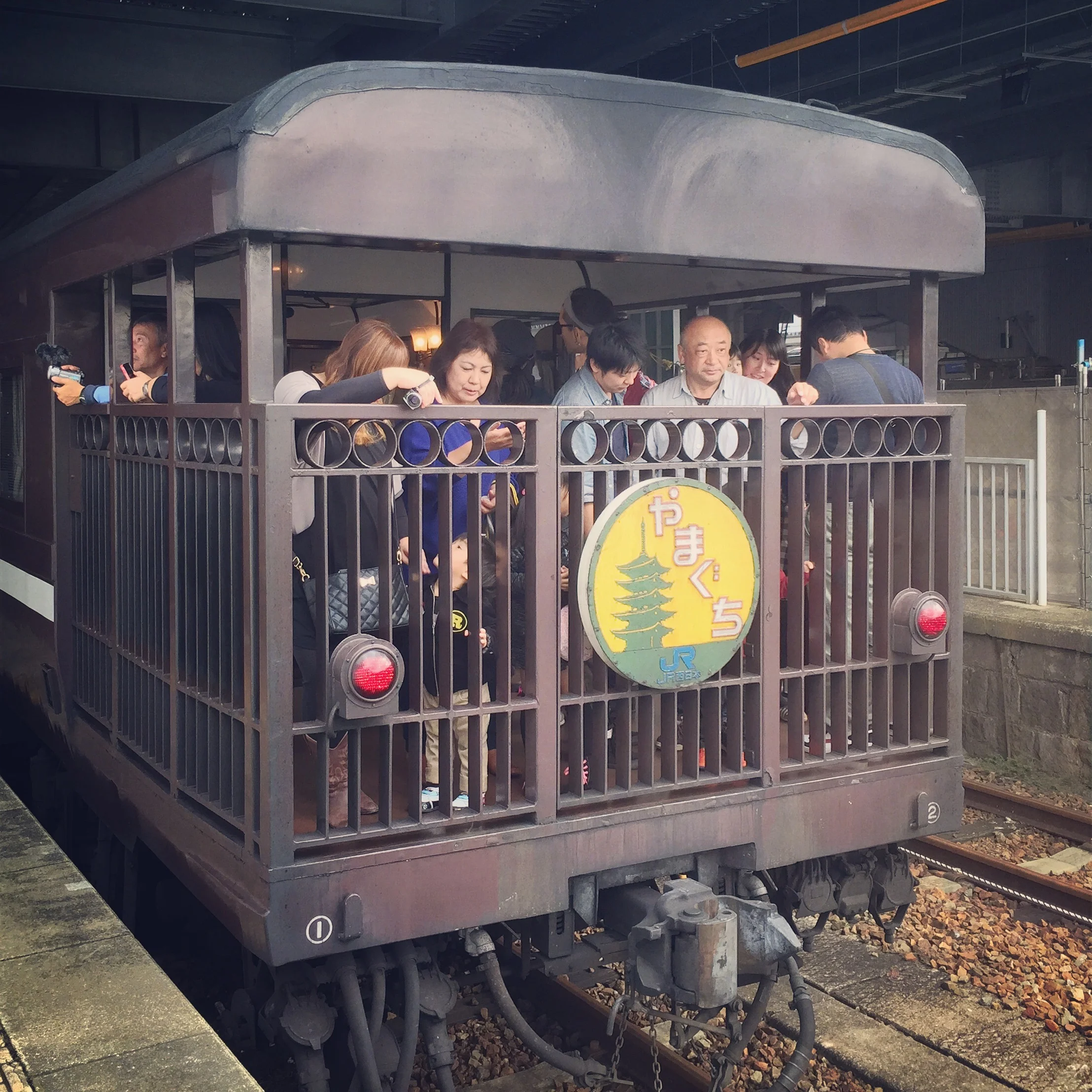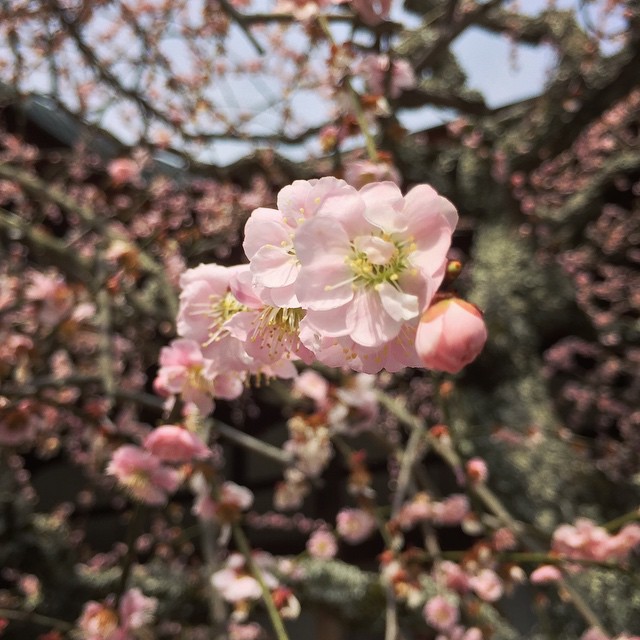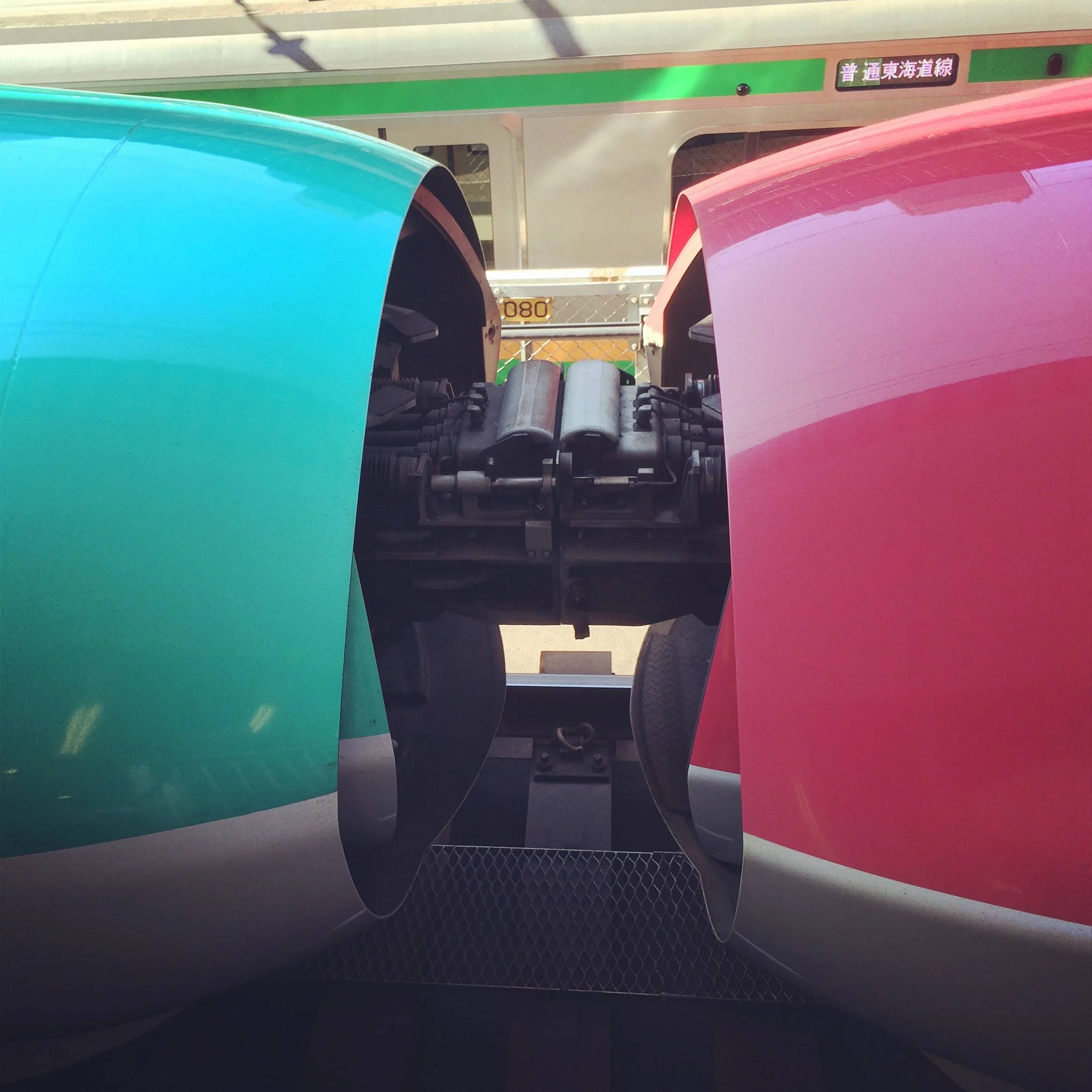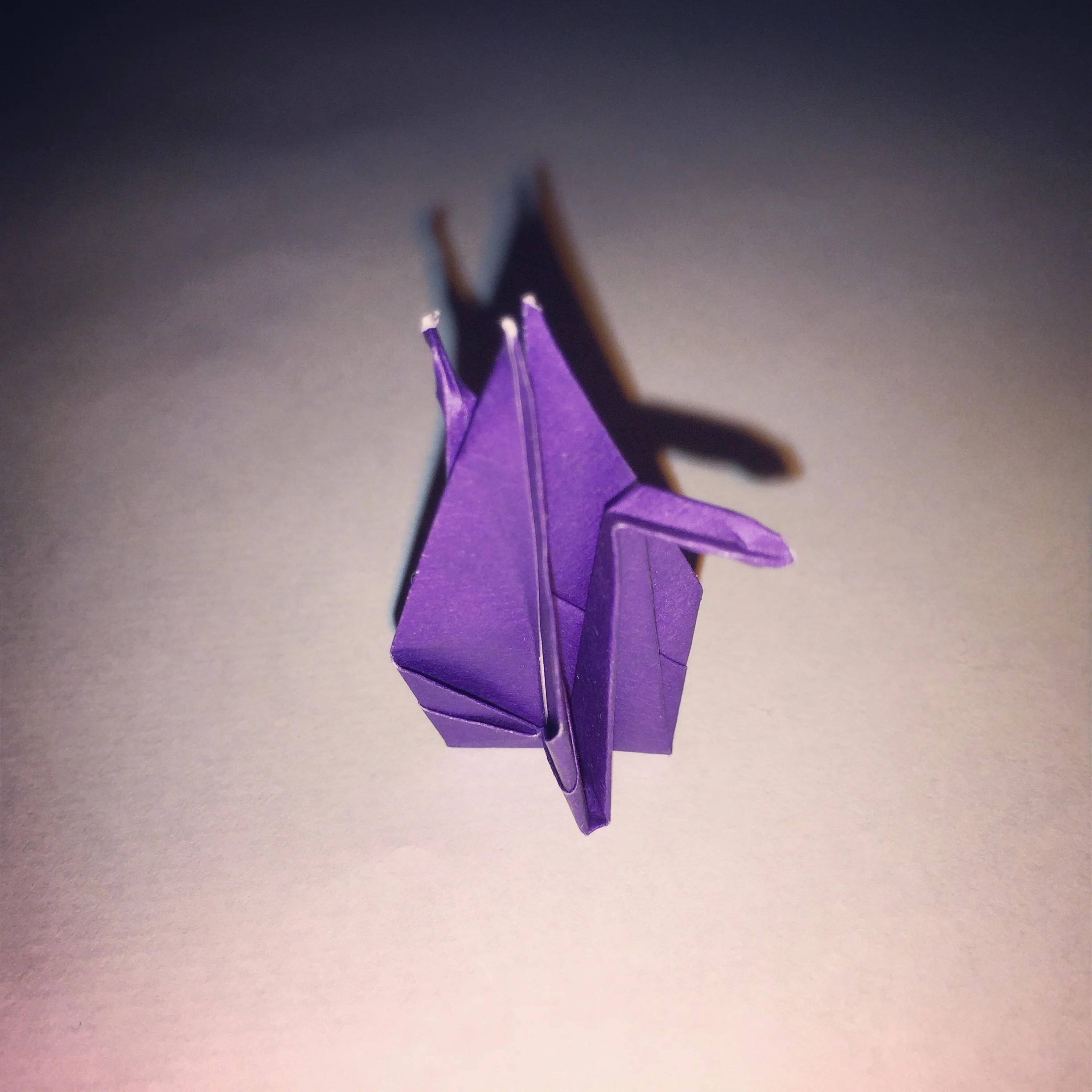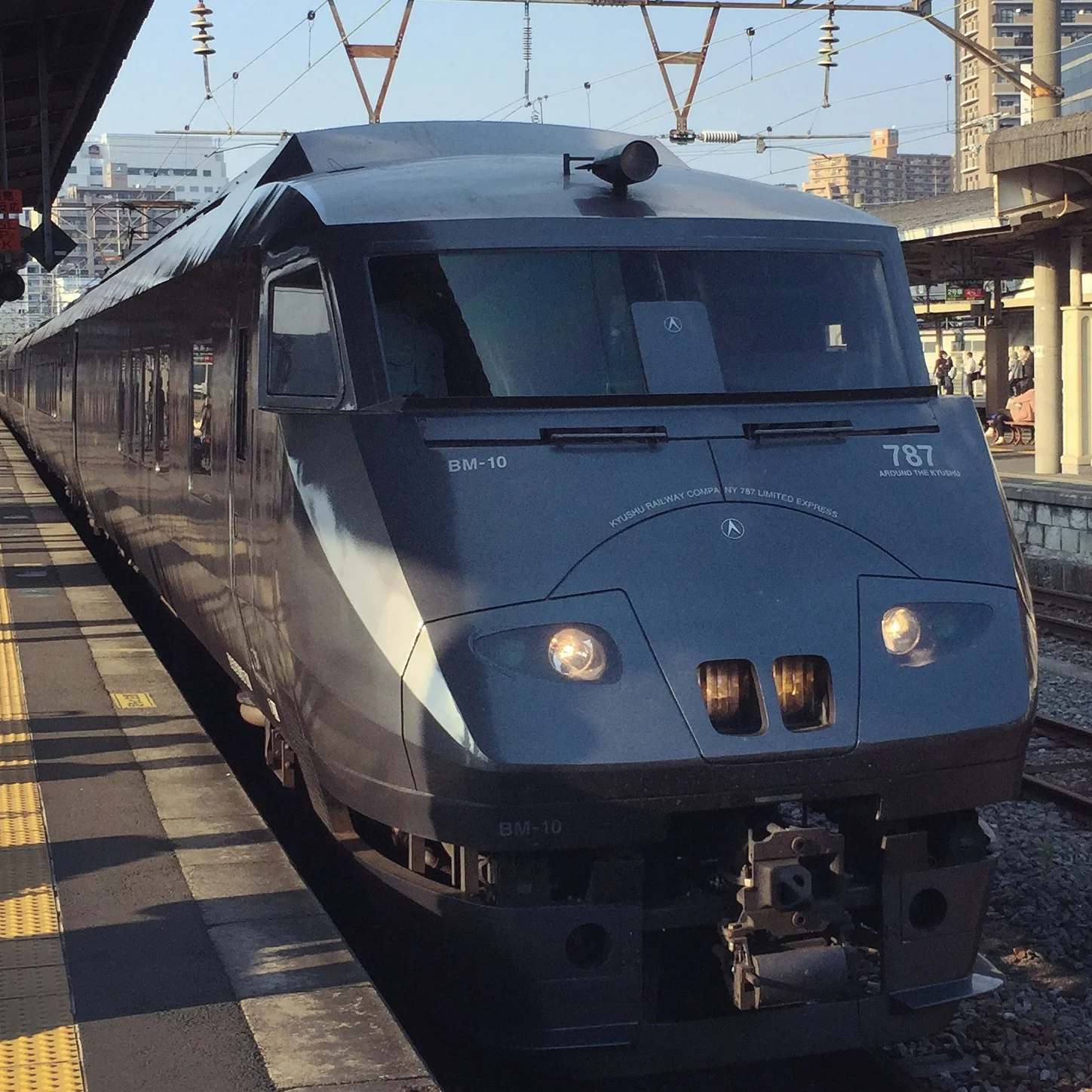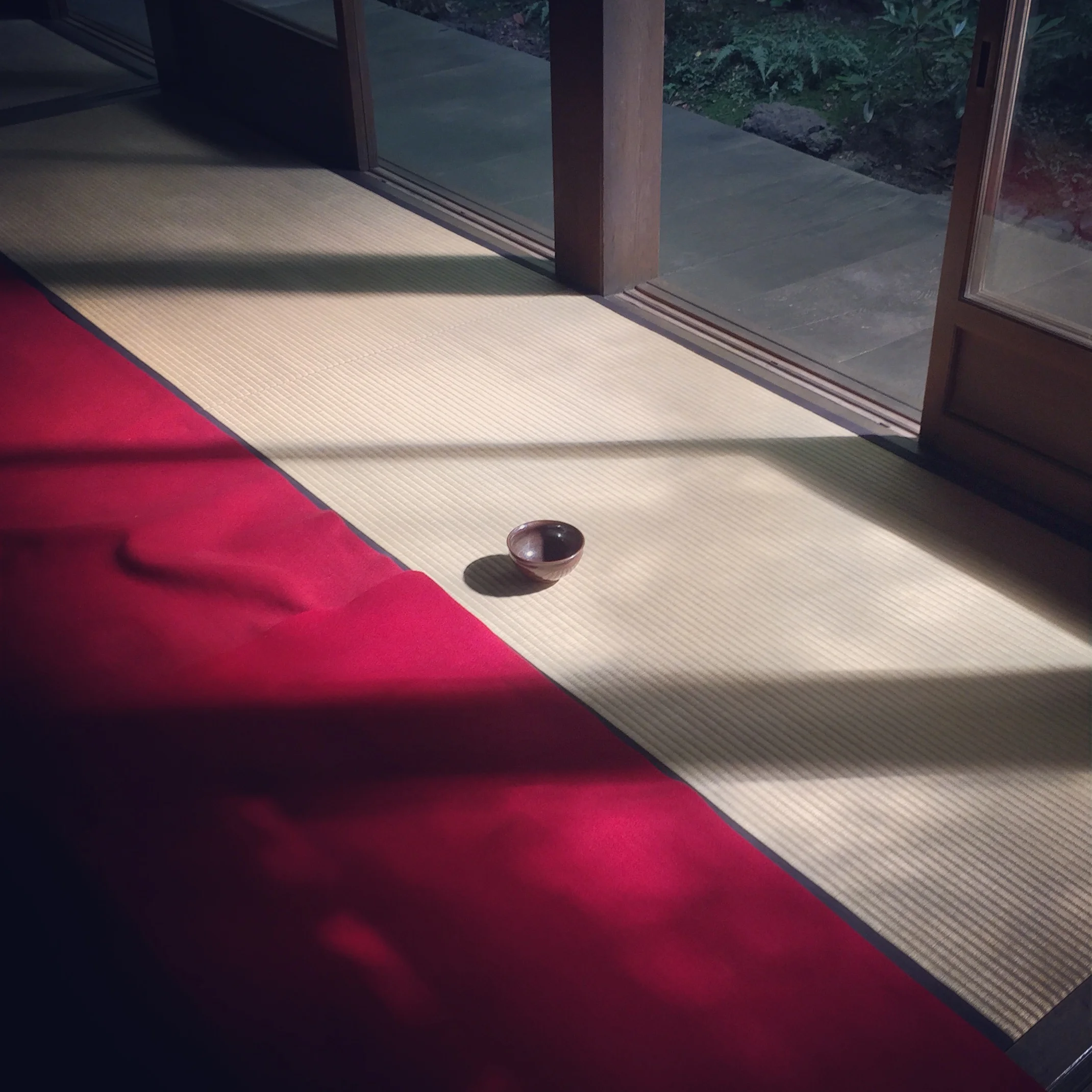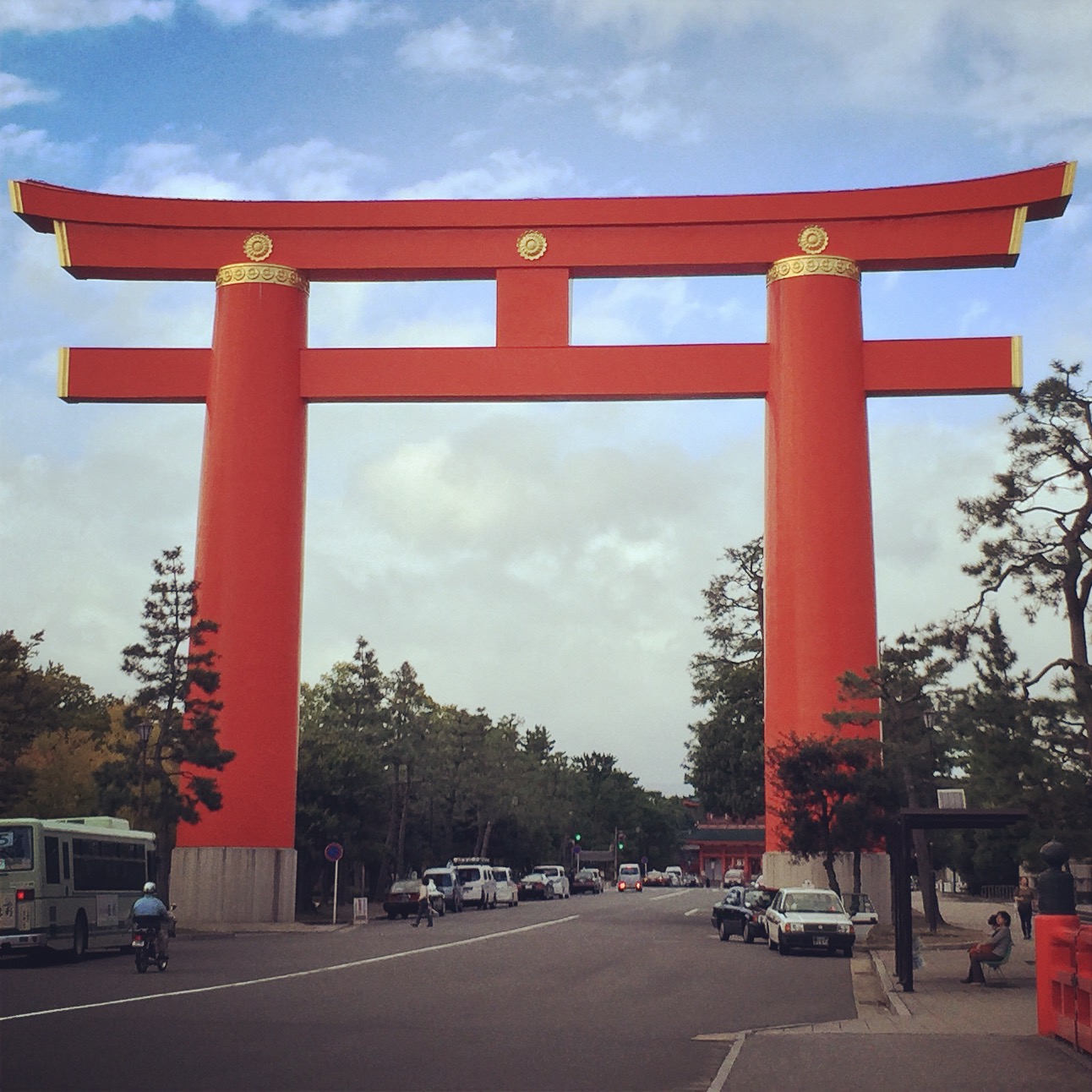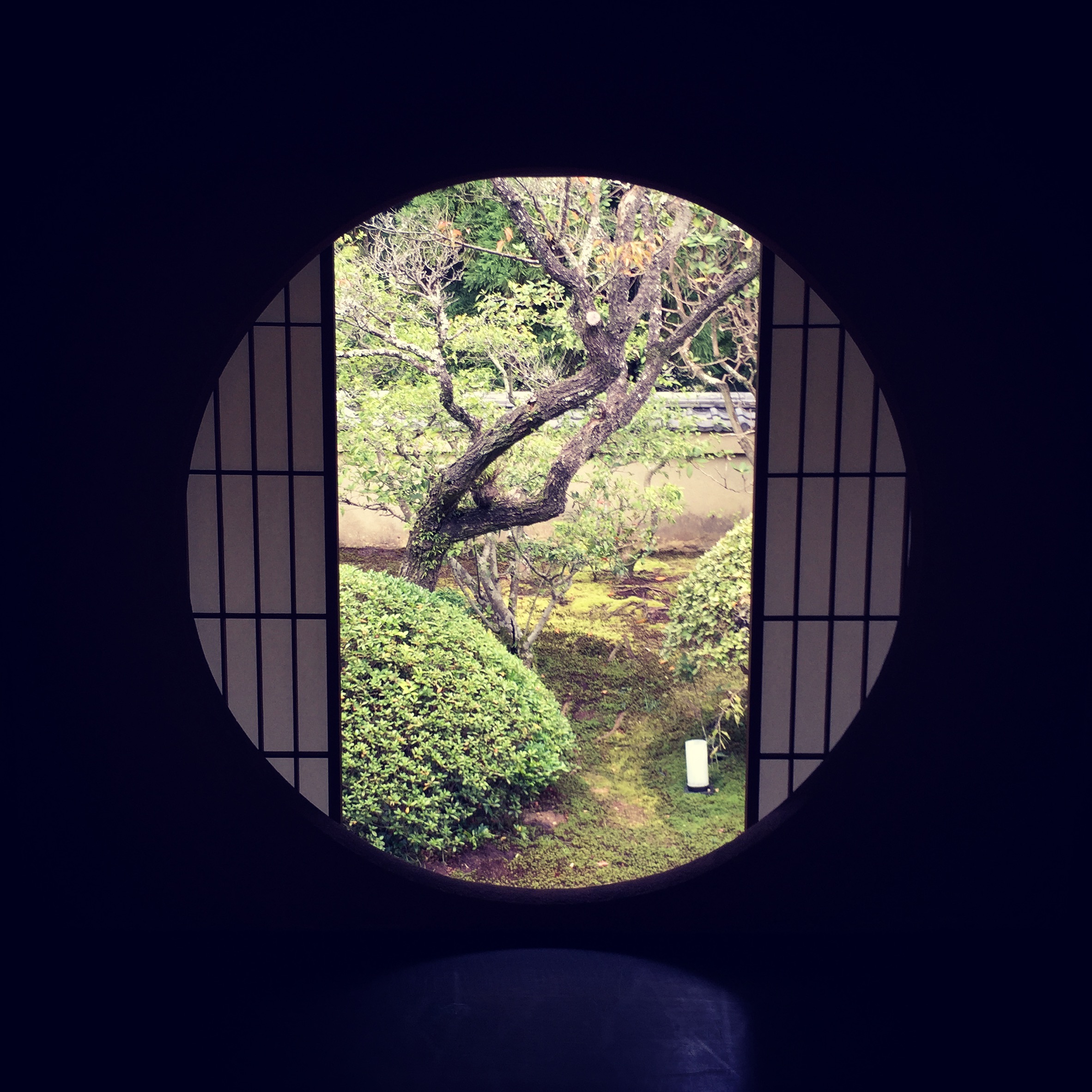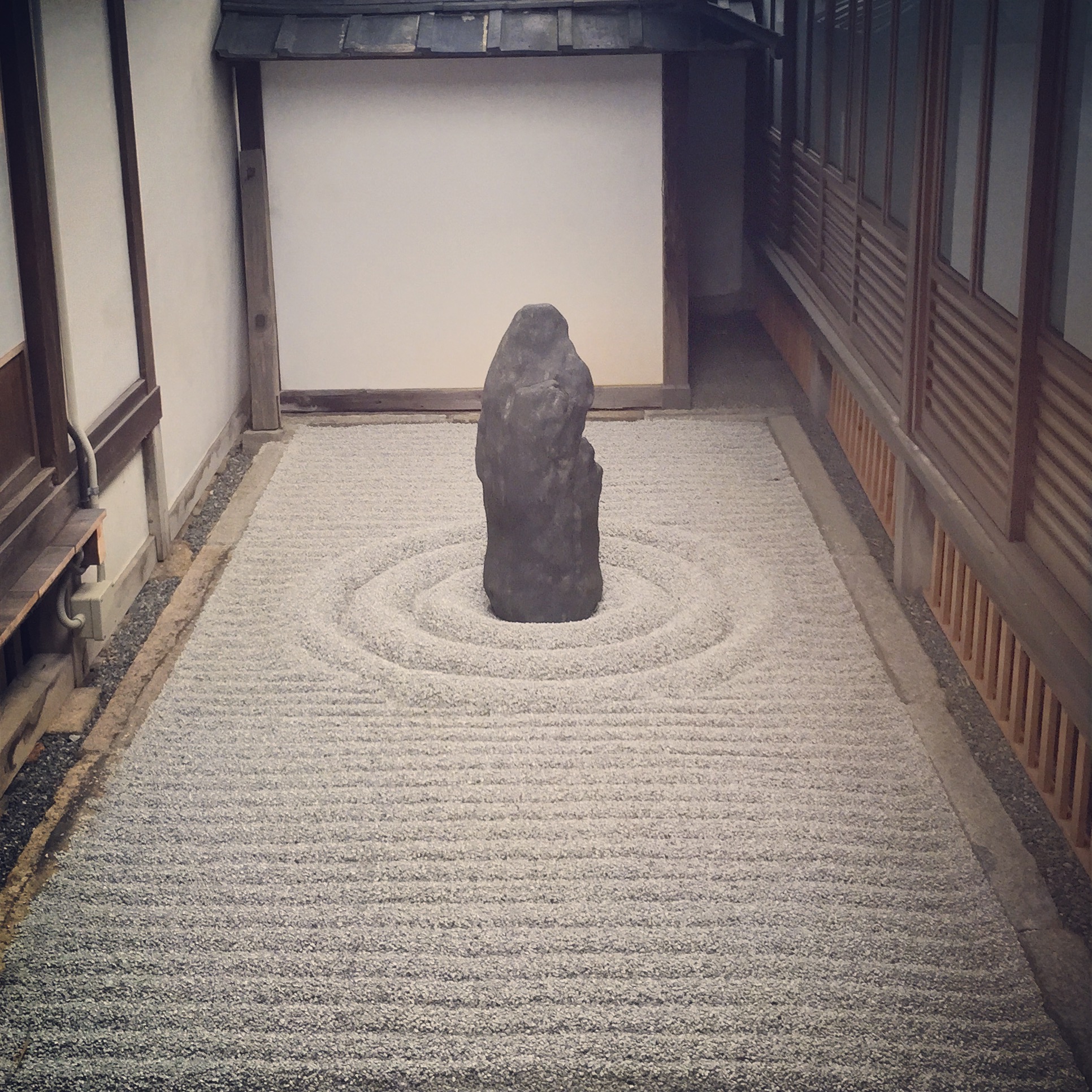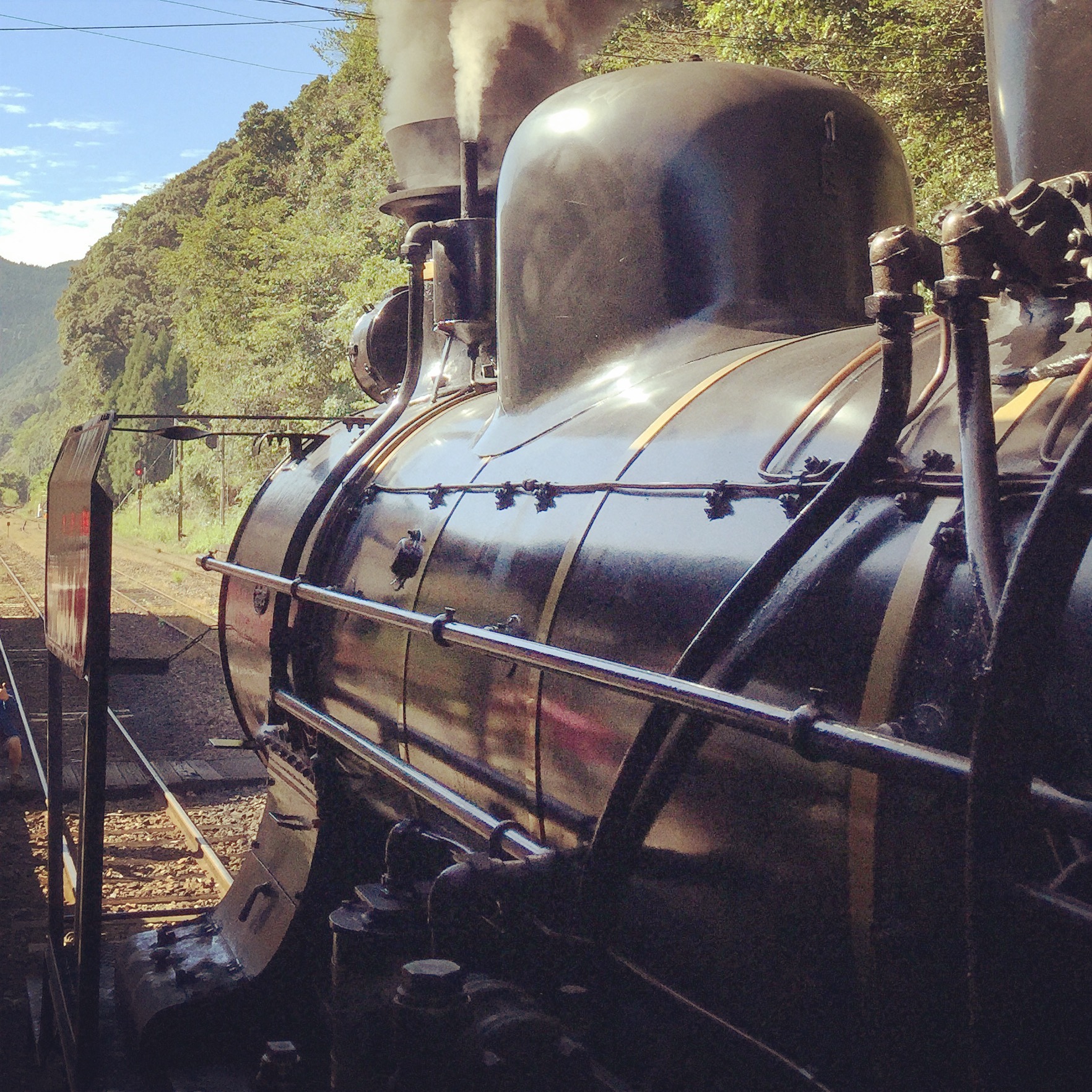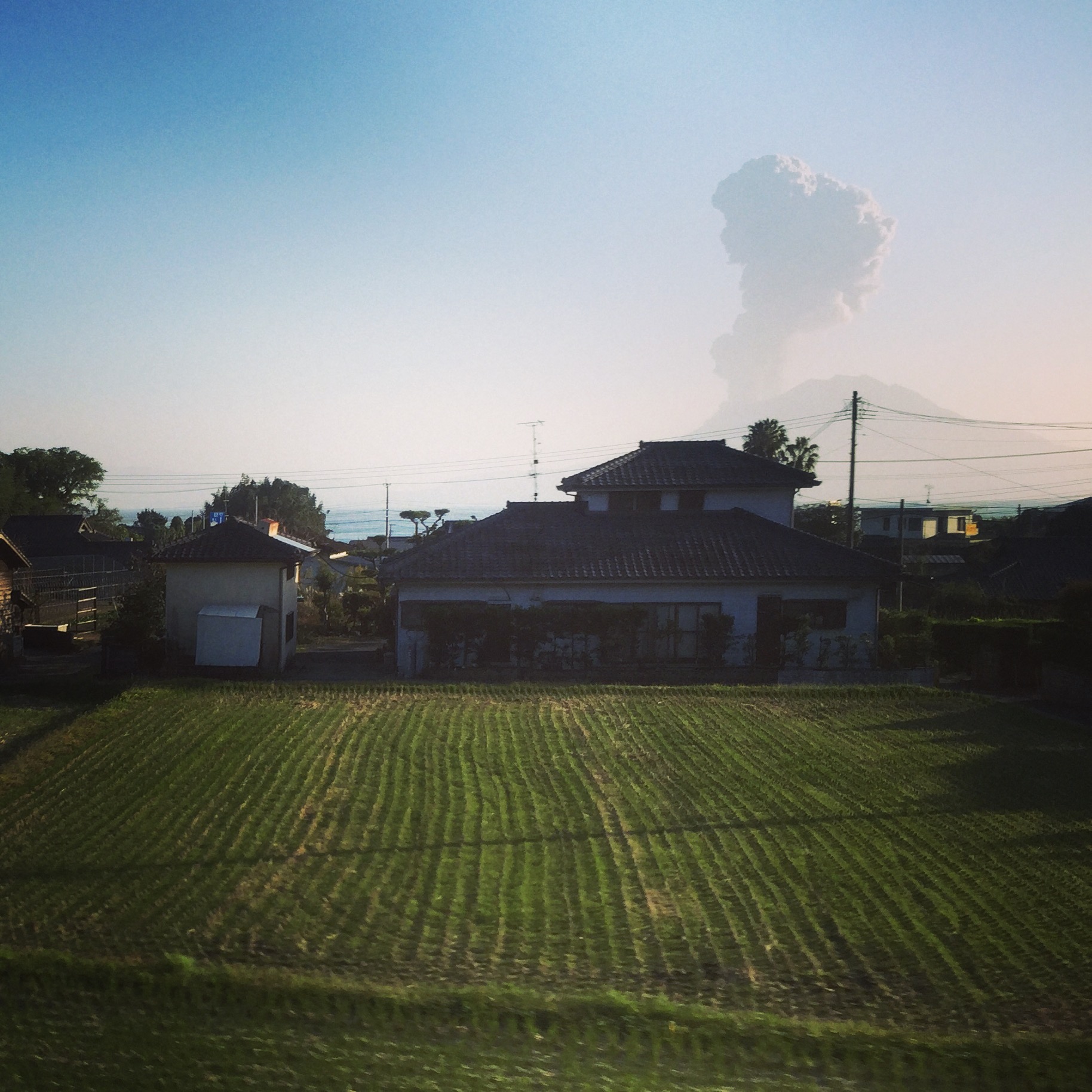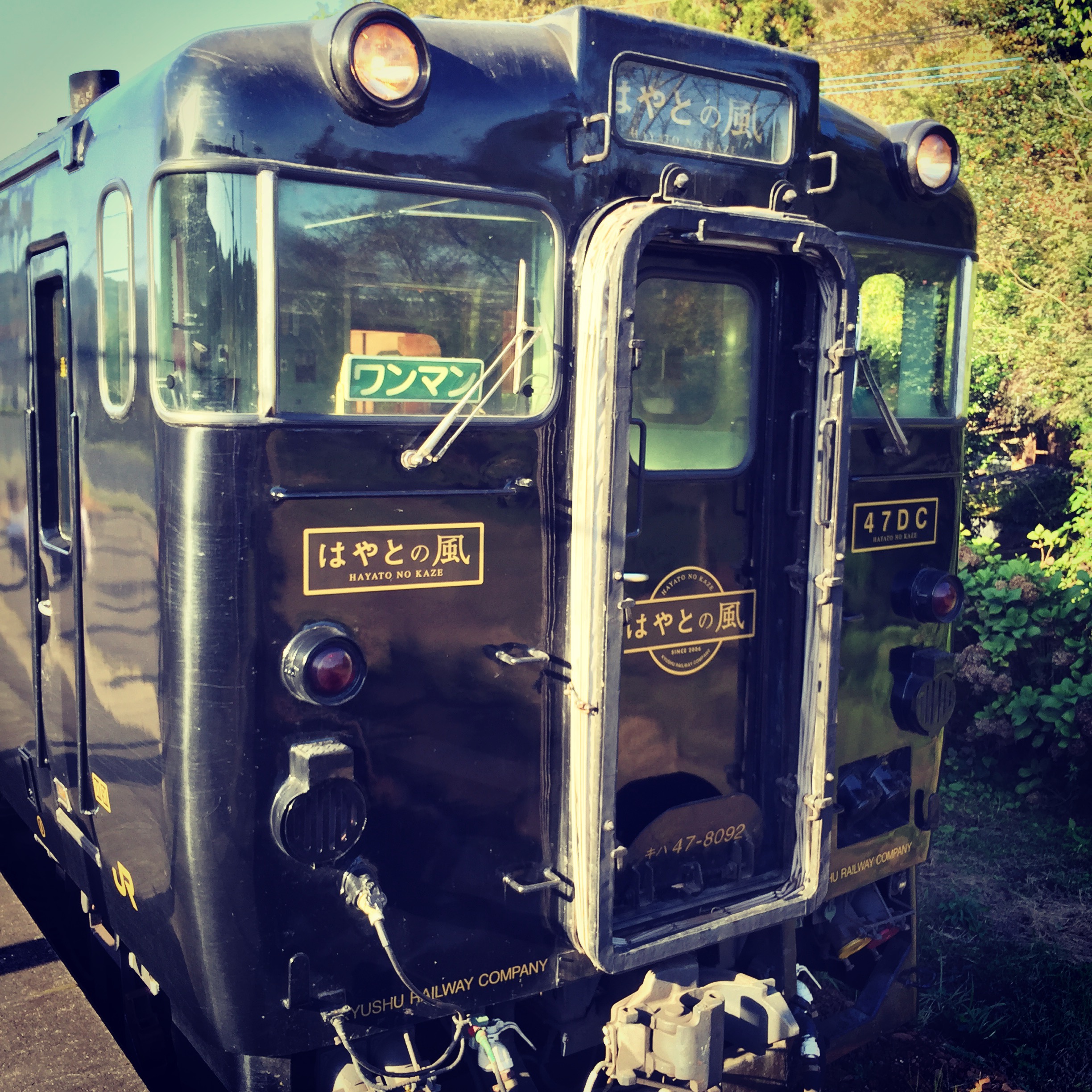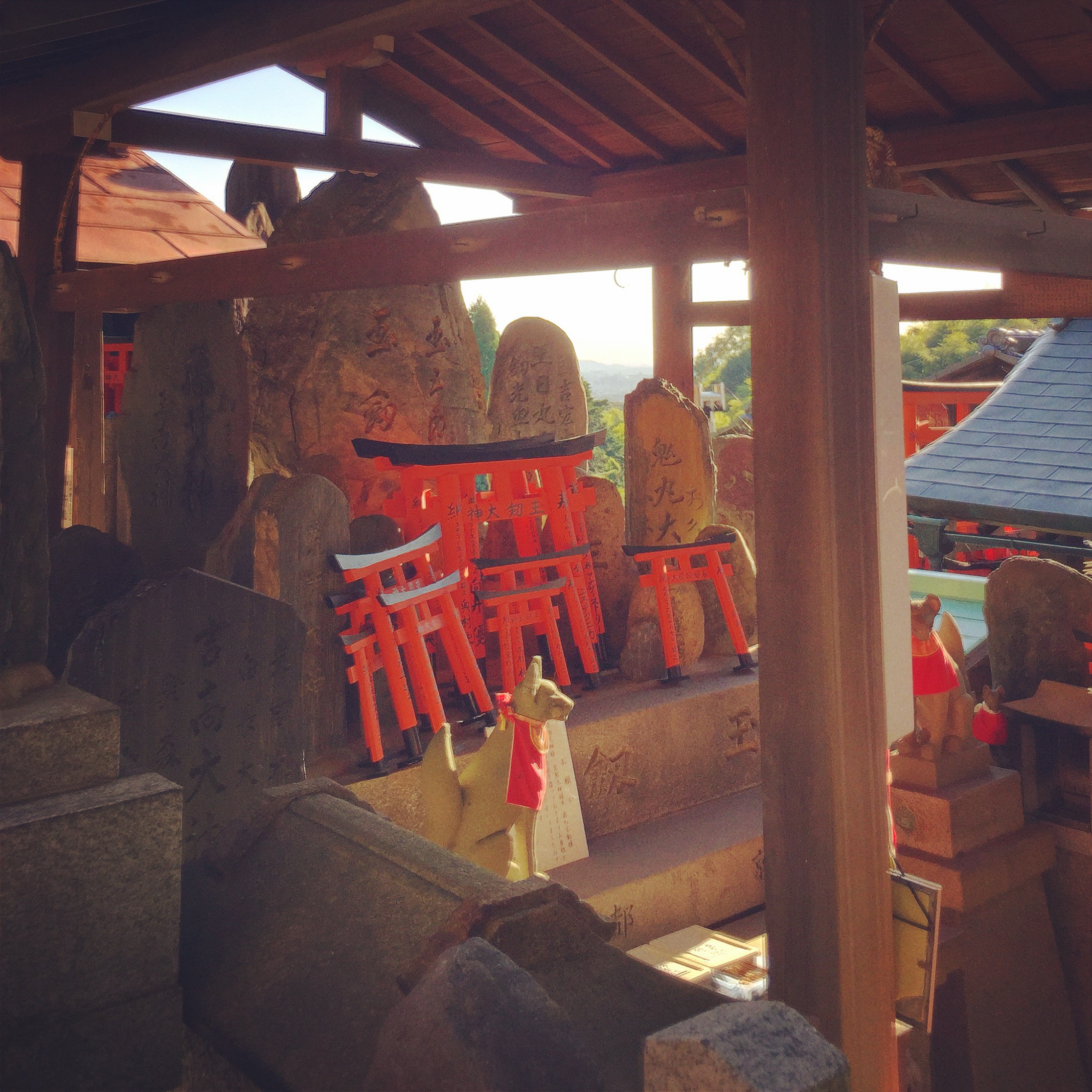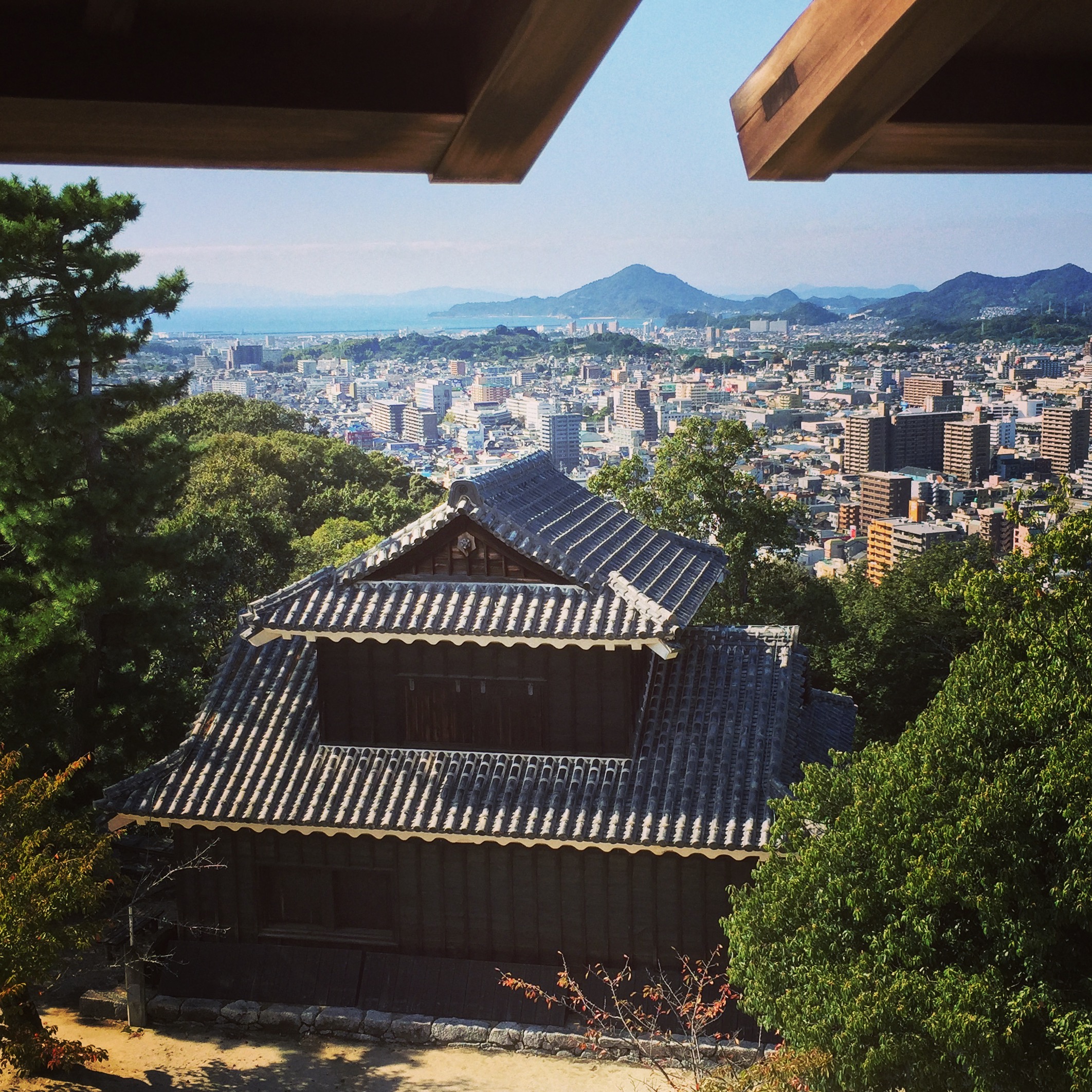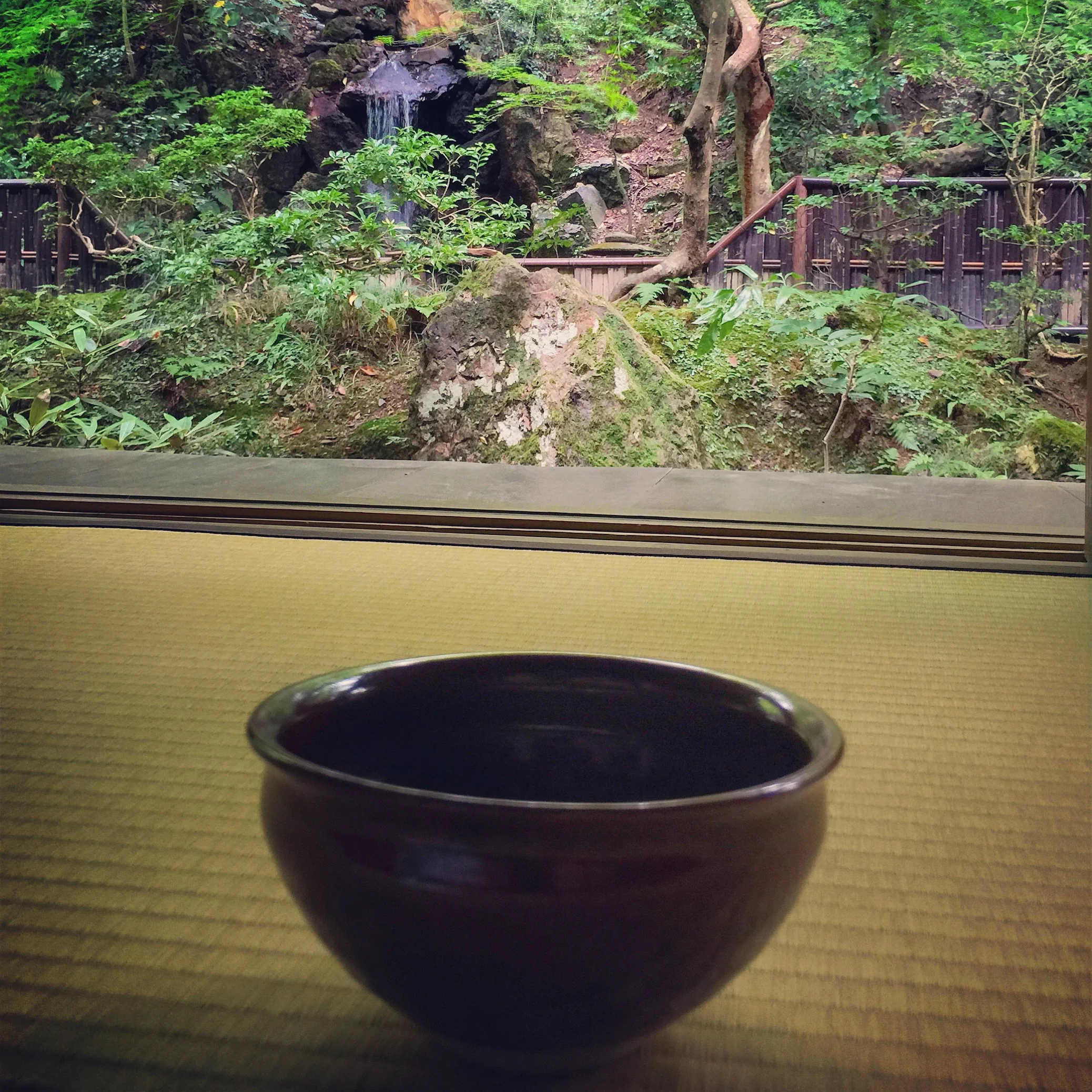I absolutely love Japan. I’ve spent so much time there recently that I’m my friends’ go-to person for Japanese travel recommendations. Hence, this Exceedingly Opinionated Guide.
The key to a fabulous Japan trip is the planning
For anyone travelling to Japan, the first question to answer is what kind of holiday you want in your trip. Exploring the modernity of Tokyo? Getting out into the mountains? Temples and Zen gardens? Riding many different Shinkansen? 20th century history?
With anything less than a month, you’ll only be dipping into a few plates on the genkanzushi belt that is Japan, but depending on the time of year (I highly recommend spring and autumn for temperature and pretty cherry blossom/autumn leaves purposes) it’s possible to get a great variety of stuff in.
In terms of guidebook, go for Lonely Planet — the iphone version is particularly handy
Lonely Planet has a good guide to Japan, and I bought both the Kyoto and Japan books, but I don’t care for their itineraries — too much “lug all your stuff with you around Japan by train” for my liking.
My general recommendation is to pick an area of Japan and concentrate on that for each trip. My first trip I did Tokyo and Tohoku (northeastern Honshu). My second I did points west of Osaka. But Japan is so easy to get around that you can absolutely pick as many areas as you want.
The trick is to figure out what kind of holiday you want, and what your appetite is for shifting around every night vs basing yourself in a hotel somewhere for a few days. I tend to prefer the latter, and Japan has a whole range of hotels very close to (often on top of!) shinkansen stations.
Then figure out which bits of Japan you’re interested in. Time of year will have a lot to do here — do you want to go skiing in Hokkaido? Sakura-blossom viewing in spring or autumn leaf-peeping? I always recommend to avoid the summer in Japan — it’s hot and humid, though I may be a bit of a cold-climate northern European on that, since my ideal summer temperature is about 20°C. Don’t expect things to be as air-conditioned as Australia, and with the urban heat island effect it can get very sweaty indeed through October. Don't forget about the rainy season either, which affects most everywhere south of Hokkaido, or typhoon season (which isn't generally particularly dangerous, but which can be very wet).
Hotels in Japan work slightly differently
Always book your hotel rooms way in advance — people book early here. On the plus side for your budget, Japanese chains will often require a credit card for a guarantee but will not actually take pre-payment.
I highly recommend the Toyoko Inn chain for convenience, familiarity, fast wifi and price — usually around $50-60 for a (smallish) room, and Toyoko Inn Club members (join on your first night of arrival) get one night free after ten nights' stay.
It’s a very serviceable and very standardised hotel largely for businesspeople, with firm Japanese bed, desk and a full bathroom — plus enough plugs and fast wifi.
If you’re looking to splash out a little more, the Hotel Nikko chain is a good next-level-up offering, and the various Japan Railway regional companies also have their own hotel chains.
Note that all hotels in Japan are strict about check-in and check-out times, but nearly all are happy to store (or send and receive) your luggage before and after check-in. Toyoko Inn Club members get to check in at 3pm rather than 4pm.
Note that when travelling the Kuroneko Yamato takkyubin baggage service is well worth considering. Your hotel can take care of sending your luggage on ahead (or behind) you to your next hotel for about $20 — significantly more convenient than lugging it with you on the train, since each shinkansen car only has space for 4-6 suitcases.
Japan’s trains are worth a visit just on their own
I can highly recommend the Japan Rail Pass, which must be bought well in advance outside Japan. There are a myriad regional rail passes that can be purchased inside Japan, but these are complicated and sometimes don’t include the shinkansen. I also highly recommend the Green Car version of the pass, which is sort of business class on trains. It’s well worth it if you’re planning to do a lot of hopping about, although you’ll want to become familiar with the Hyperdia train timetable website and app, as well as how the “green window” booking offices in train stations work — Green Car requires a reservation, although you can also just hop on the non-reserved cars of any shinkansen with a green car ticket.
If you like trains, do hit the railway museums in Saitama (near Tokyo and slightly more convenient generally) or Nagoya if you’re not heading Tokyowards. For the advanced traveller, the Usui Pass Railway Heritage Park near Takasaki is great too. Make sure also to look up some of the hilarious “joyful trains” in your region. They’re a real trip and fascinating people watching too. Note that you will need reservations, and they book up fast — have a few options for dates and make your bookings when you purchase your rail pass. Be aware too that they usually do not have Green Car seating. In terms of specific recs, the steam-hauled SL Yamaguchi departs from Shin-Yamaguchi shinkansen station, travels up a gorgeous valley and is well worth a trip if you are in Western Honshu.
If your trip is Shinkansen-interest heavy, you’ll probably want to focus on either the JR East or Kyushu regions, because these are the newest lines and have the shiniest newest trains in lots of colours and lovelier interiors. Note that there is no reason to have a Green Car pass for the Kyushu Shinkansen, since most of the Shinkansen there don't have Green Cars, although the non-Shinkansen trains do.
Also, if you are concentrating yourself on Honshu west of Tokyo, note that nationwide JR passes restrict you to the slower, stopping shinkansen, which also depart less frequently. There are some local rail passes that allow you to use a wider range, so check into what the current situation is — the local rail pass varieties change quite often.
Do also make sure you sample some ekiben, the super-convenient railway boxed meals available at most train stations featuring all kinds of delicious goodies.
Keeping connected is bafflingly unusual
For solo travellers, I do strongly recommend getting a local SIM card — rental pocket wifi devices are expensive for just one person, and you have to charge the thing. SIM cards can be delivered to your hotel, which is ideal — and, in Japan, being able to use maps/timetables/Google Translate/look things up/tweet/email/Facebook is a godsend. My go-to is Sakura Mobile, but I've used eConnect in the past too.
Note that there are some tech quirks and it can be a faff to uninstall the APN settings, so make sure you have backed your phone up and imported all your snaps before you leave and after you return in case you need to do a full restore. For more than two people, pick up one of those unlimited pocket wifi devices (and bring/buy extra power banks).
Kyoto is the best city in the world
On any Japan trip, I’d recommend a few days in Kyoto hitting as many temples/gardens/shrines as take your fancy. I've spent months there and still haven't seen everything I want to. It’ll still be there next trip!
Kyoto is an utterly wonderful city, but it rather doesn’t mesh well with a shinkansen trip — it’s a bit of a pain to get into and out of, and laid out so that you want to divide the city and conquer it. There are so many temples and the public transport can be a little impenetrable, so you’re best off picking either east Kyoto (Higashiyama) or west Kyoto (Arashiyama and northwest Kyoto) and basing yourself there to avoid having to cross Kyoto on the bus.
Consider how many days of Kyoto and its temples you fancy. I reckon that 3-4 temples a day in the same district is plenty, even for a seasoned Japan traveller like me. You don’t want to spend every single evening bathing your aching feet and legs after all, although Japanese baths are deep and wonderful.
My trick is to pick one big name temple from the Lonely Planet see do first thing (to avoid the worst of the tourists), then aim for one of the other lesser-known temples in the guidebook for the rest of the morning. Have lunch somewhere, and then in the afternoon peer at Google maps for a random temple that’s not in the book at all. I’ve often found that these tiny silent temples were the most glorious experiences of a trip to Kyoto.
In terms of logistics, fly into Osaka Kansai and get in by airport train. If available, get the Haruka + ICOCA (tap-to-pay, like Oyster or Octopus or Myki but you can use it almost everywhere to pay for almost anything, including metro/local train tickets almost nationwide) deal from the train station in the airport. Hop on the 90-minute train into Kyoto station. Take a taxi to wherever your hotel is, and use public transport from there when exploring Kyoto. (Unless there are three or more of you, in which case taxis may be good value.)
There are various hotels across the quality and price spectrum in each area. If you just plan a couple of days in Kyoto, pick one side of the city and stick to it. I can personally recommend the Toyoko Inn Shijo-Omiya for English-speaking staff, fast wifi, cheerful service and being bang on the Randen tram, bus lines and not too far from the station by taxi.
I love western Honshu and Kyushu
If you are considering western Honshu, I suggest basing yourself for a week in Okayama, a very convenient city between Kyoto and Hiroshima. There are several hotels bang on top of the Shinkansen station, a lovely castle and one of Japan’s top three gardens. There are numerous convenient eateries next to the station, from the handy “konbini” 7-11 type stores where you can pick up a couple of rice balls or a sandwich, a weird and wonderful drink (or a coke!) and a yummy bit of cake to proper sit-down restaurants of all types in the shopping centre underneath.
It’s also very convenient indeed for Himeji (one of Japan’s best castles), Hiroshima (which I have not yet done, but which could also include the floating torii gate), Matsue (the Yuushien garden is utterly stunning), and a day-trip into Shikoku, the remote island without shinkansen but which is connected by the stunning Great Seto Bridge and has is well worth a trip. Matsuyama is a lovely run between sea and mountains and has a great castle, while the trip to Kochi is more mountainous in scenery.
The SL Yamaguchi steam trip from Shin-Yamaguchi is really worth it — and Shin-Yamaguchi is just 90 minutes on the “stopping” shinkansen (which is what you’re restricted to on the JR Pass…no Nozomi or Mizuho express trains for you, but that just means it takes 90 minutes not 60 minutes!).
That alone would be a very busy ten days! If you have more time than that, I would head west into Kyushu and base yourself in Kumamoto (another city with decent hotels on the Shinkansen, an amazing castle (though currently under repair from the earthquake), a top-notch garden and which is very convenient for the rest of Kyushu). Nagasaki is a good alternative to Hiroshima for that period in history, and the trip on the slower trains from the shinkansen main line is beautiful.
There are several "joyful trains" from Kumamoto, including another steam train and one that goes up the Mount Aso volcano (if it’s not currently spewing ash and gas, which closes the line!). Note that Cathay and a few other airlines fly out of Fukuoka (the airport code for which makes me chuckle like a schoolboy) so you could well fly into one airport and out of another.
I can take or leave Tokyo
You know how people are either Sydney/Melbourne, LA/SF, Auckland/Wellington people? Seems people are Tokyo/Kyoto people. I'm generally a Kyoto person, though in recent years I've been warming to Tokyo. But bear in mind that Tokyo is a large metropolis, everything you want to see is about 45 minutes from everything else, and much of the Tokyo-style experience can be enjoyed more cheaply and easily in other cities.
Most people prefer Haneda Airport closer into town than Narita Airport, which is an hour east in Chiba Prefecture. The exception is if you're connecting straight to the Shinkansen, in which case the Narita Express is much easier than the Haneda train or monorail choice.
In terms of Tokyo, my suggestions (some outside the usual tourist traffic) are:
- Bar Ginza Panorama, which is actually in Shibuya — of course you want a model train set as the centrepiece while you're having a drink
- the Ghibli museum (note that tickets are complex and need to be booked well in advance
- The Asakusa shopping streets and shrine area, which is a great spot for street food, souvenirs and peoplewatching — and do hop over the river to the Asahi Beer building for a crisp one on the 22nd floor panoramic tasting bar. (It's next door to the bizarre Philippe Starck "golden poo" on top of a black building
- riding the Yurikamome peoplemover through the new districts of Tokyo Bay
- a cat cafe, which are pretty much everywhere, although my favourite is the MoCHA chain
- Shibuya crossing — grab a coffee in the very busy Starbucks and go upstairs for the best view. The local Uobei Sushi is also good bet for a first time at a Shinkansen sushi restaurant, and the Osaka gyoza place closer to the station is really good
- The Nabezo chain of nabe/shabushabu restaurants
- Shinjuku Gyoen garden
My day trip highlights, all of which include Shinkansens or regular trains (make sure you make reservations at the Green Window on the first day of your rail pass!):
- Matsumoto Castle (my favourite in all Japan), and you can do a round trip that also includes Nagano on the Shinkansen and the Wide View Shinano plus the Azusa — but note that the latter two have a less comfortable 2-2 layout Green Car.
- Ito, a seaside town that can be reached either by the new Izu Craile Joyful Train on weekends or holidays, or by the Super View Odoriko with its panoramic front window. You want row 1 if you're in the Super View Odoriko's Green Car, and you probably want to avoid the older non-Super View version of the Odoriko.
- SL (steam loco) Banetsu Monogotari, from Niigata (do try the coin-operated sake tasting there), which ends up in scenic Aizu-Wakamatsu, which has lovely gardens.
- Matsushima, one of the Three Views of Japan. The town en route is also a great insight into the kind of things that Japanese people like to do on holiday.
- Toreiyu Tsubasa, the #FootbathShinkansen — there's a smashing little ramen restaurant in the station itself if the weather is grim up in the mountains.
- Hirosaki Castle, which is a long day trip via Shin-Aomori but doable from Tokyo — stop for some sakuranabe horse stew at the Shin-Aomori station food court!
- The Railway Museum in Omiya, which is the first stop north of Tokyo on the Shinkansen. Don't miss the rooftop trainspotting deck.
- …and do stop at Utsunomiya if you're passing for gyoza dumplings at Gyozakan, which now has an English menu in the shop!
NB that JR East keeps changing the number of days and sub-regional splits of its rail pass, but it's a great option — not least because it can be purchased within Japan! Even if you just go on a few day trips (and the “hour sitting on a train watching the world go past, then touristing, then a nice sitdown again” is quite a pleasant option after hoofing it around Japanese cities) it’s worth it.
Ganbatte! Enjoy Japan — and do let me know what you loved most! I'm @thatjohn on Twitter.
